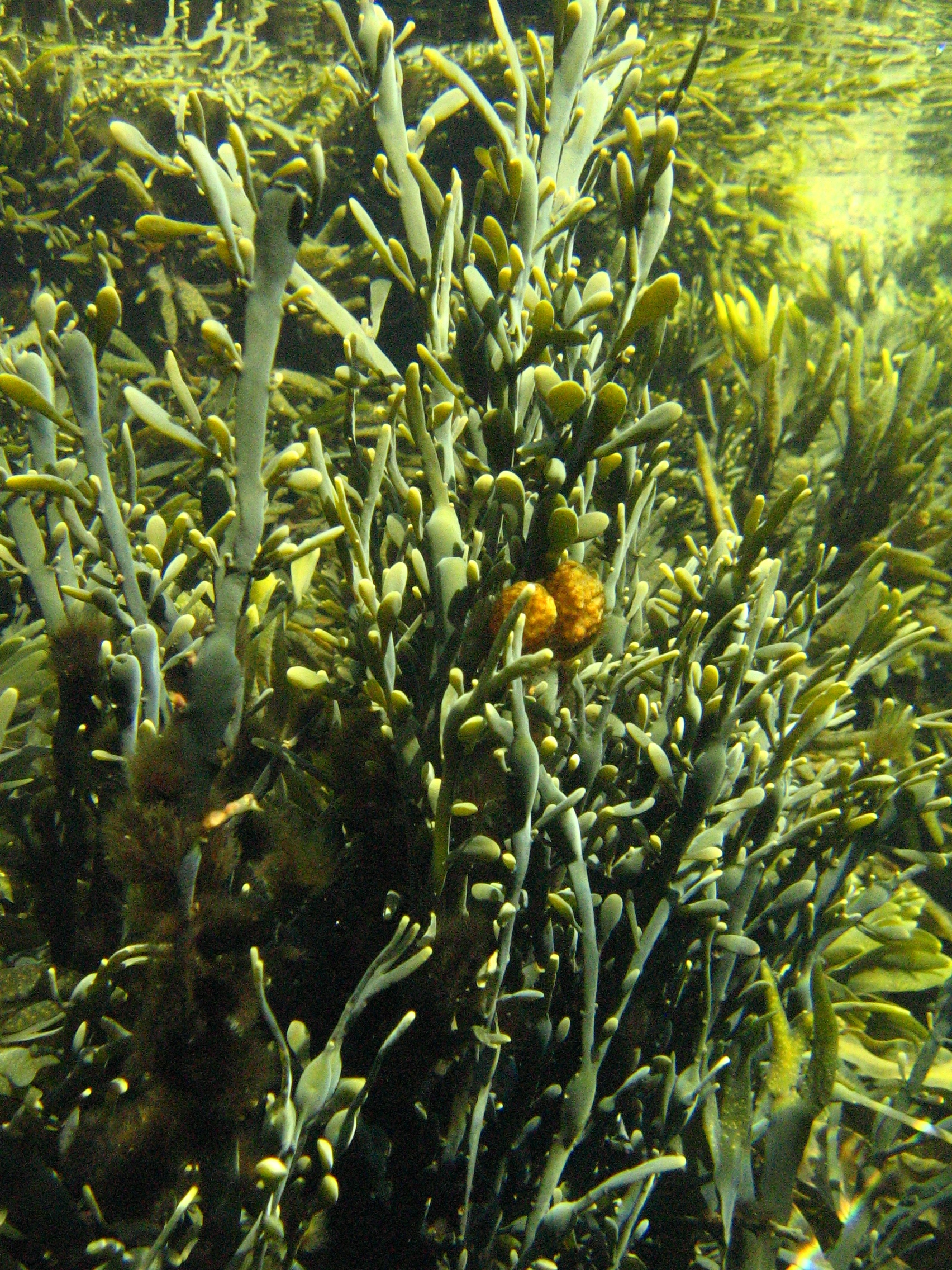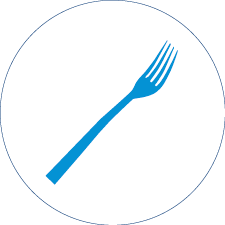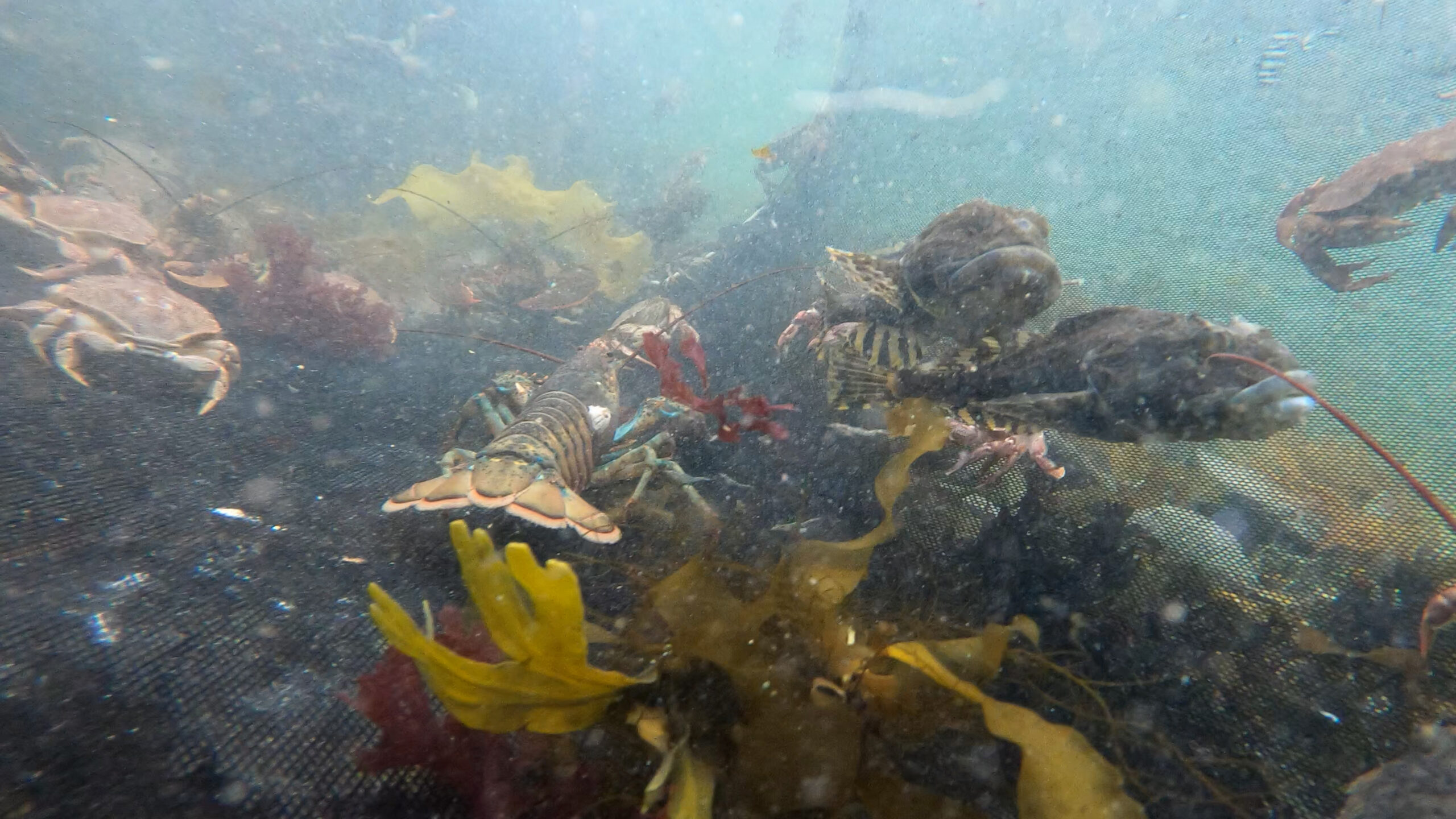
SIZE:
Up to 3 m long.
LIFE EXPECTANCY:
Up to 20 years.
LIFE CYCLE:
Sexual maturity from age 5.
Plants are either male or female. Reproduction takes place in spring. After this, and once the embryos have been released into the water, the receptacles detach from the mother plant. After fertilization, the embryo settles to the bottom. As the embryo is sensitive to waves, a calm spot is best for it to settle.
The young shoots will attach themselves nearby and gradually colonize the environment. They leave so little space between each other that other species of algae find it difficult to establish themselves.
The knotted wrack seaweed can also regenerate from its holdfast.
One, two, three…
Do you want to know the age of the knotted wrack? It is easy! Just count the number of vesicles on the main stem. Each one corresponds to a year of life, except for the first year.
Knotted wrack is a long alga, varying in colour from olive green to yellowish brown. Its fronds form long, narrow, branched straps with no central vein. The main axes of the fronds bear air-filled vesicles here and there, enabling the alga to float. Receptacles are found along the fronds in the form of small balls attached by a thin stalk. These produce eggs or sperm, depending on the alga’s gender.
Coastal zone, between high and low tide limits, up to 15 m deep and above where rockweed is found.
Knotted wrack prefers relatively calm, sheltered environments, such as bays, where it forms dense bushes.

Individuals of knotted wrack leave so little space between each other that other species of algae would it difficult to establish themselves.
Credit : Éric Tamigneaux
PREYS:
CO2
Solar energy
PREDATORS:
Herbivorous molluscs
Grazing fish
MACHINES:
Hand harvesting.
REGULATIONS:
Cut the algae at least 15 cm from the spike. A higher cut enables faster regrowth.
Take care to preserve the holdfasts, as they allow the knotted wrack to regenerate.
Harvesting takes place at low tide.
Alternate between areas that are cut and areas that are left untouched. Moreover, to preserve the resource, only every second frond is harvested.
Wait three years before re-harvesting knotted wrack on the same site. This gives the algae time to regenerate.
The harvesting period varies depending on the location: from April to December in the Gaspé Bay and from June to November in the Lower St. Lawrence.
Knotted wrack is a Smarter seafood-listed species.
BENEFITS:
Knotted wrack is a good source of iodine, iron, calcium, magnesium, vitamin B12 and fibre.
LET’S COOK:
Knotted wrack has an umami flavour, which is strongly marine and iodized. The flavour is similar to that of oysters. This alga can act as a flavour enhancer.
When fresh, its texture is tough and fibrous.
The waters of the St. Lawrence are known for their good quality. However, as algae absorb the elements present in the water to grow, it is preferable to ensure that the harvesting site is clean before eating this species fresh.
Ascophyllum to the rescue
Recent research shows that spraying tomatoes with Ascophyllum extract improves their growth and helps them resist various stresses, including a lack of water.






